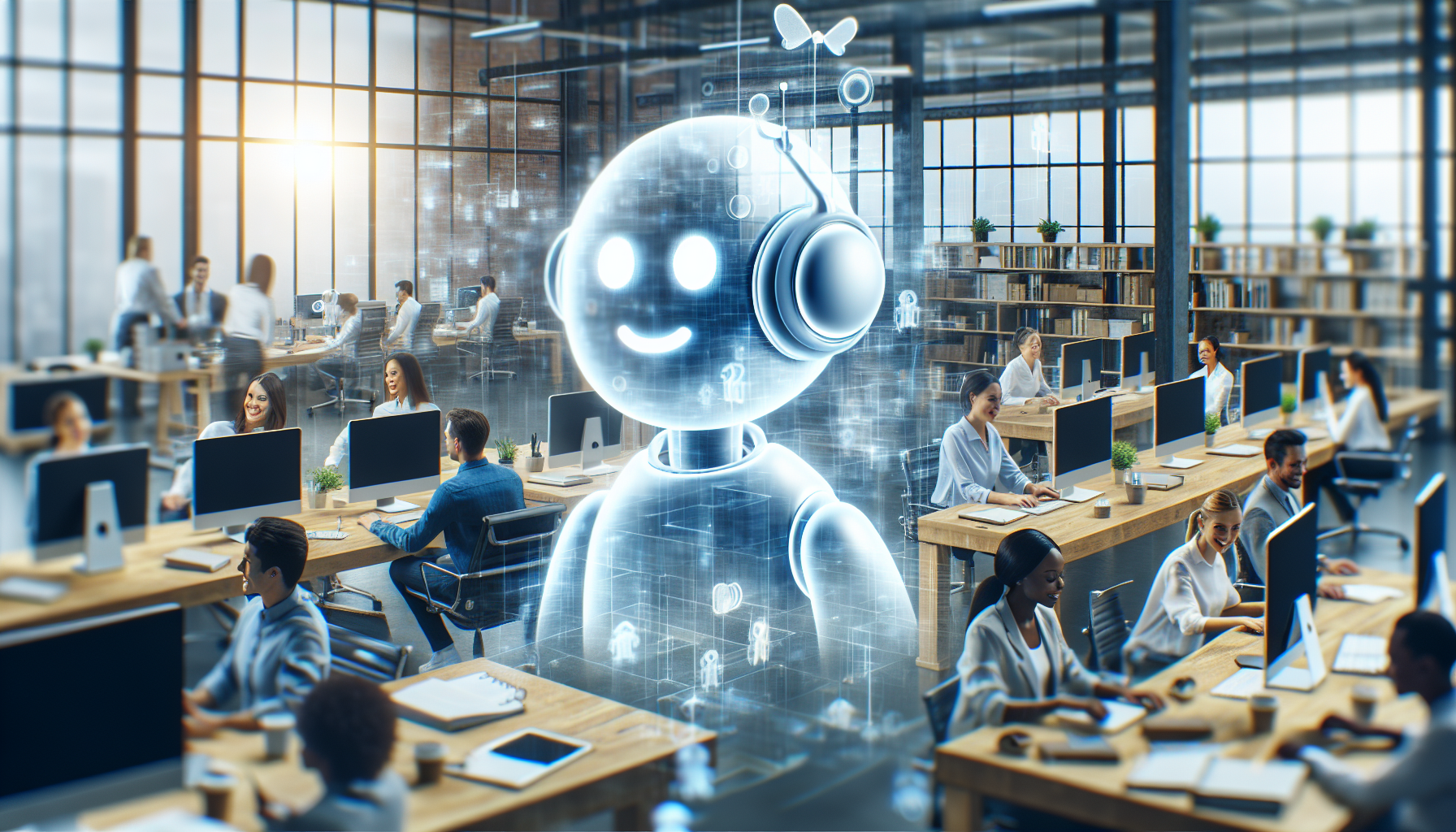Enhancing Workplace Productivity: ChatGPT and Its Integration with Automation Tools
Understanding ChatGPT
ChatGPT, developed by OpenAI, is an advanced natural language processing model that utilizes machine learning techniques to understand and generate human-like text. Its capabilities span from answering queries and composing emails to providing in-depth analyses and generating reports. By integrating ChatGPT into workplace processes, organizations can streamline operations, enhance communication, and ultimately boost overall productivity.
The Role of Automation in the Workplace
Automation tools are designed to perform repetitive tasks efficiently, reducing human error and freeing employees to focus on more strategic initiatives. By integrating these tools within the workplace, organizations can optimize workflows, cut costs, and enhance accuracy. The combination of ChatGPT with automation platforms presents a powerful solution for businesses aiming to improve their productivity.
Benefits of Integrating ChatGPT with Automation Tools
-
Enhanced Communication:
- ChatGPT can automate responses to frequently asked questions, ensuring consistent communication. By integrating it with customer support platforms like Zendesk or ServiceNow, organizations can provide instant support, reducing wait times and improving customer satisfaction.
-
Content Generation:
- Content creation is often a time-consuming task. ChatGPT can assist in generating marketing copy, social media posts, or internal newsletters. When combined with automation tools like Buffer or Hootsuite, companies can schedule and publish content seamlessly, ensuring a consistent online presence without dedicating extensive hours to content production.
-
Streamlined Data Analysis:
- ChatGPT can analyze complex datasets and produce insightful reports. Integrating it with data automation tools such as Tableau or Microsoft Power BI allows organizations to automate the reporting process, enabling teams to focus on strategic decision-making rather than manual data compilation.
-
Improved Project Management:
- By integrating ChatGPT into project management tools like Trello or Asana, teams can use AI-assisted features to create tasks, set deadlines, and summarize project updates. This reduces administrative burdens and enhances collaboration among team members.
-
Automated Documentation:
- ChatGPT can be employed to draft meeting notes, project documentation, and other essential records. When integrated with automation tools like Google Workspace or Microsoft Office 365, these documents can be saved, organized, and shared automatically, minimizing manual input.
Choosing the Right Automation Tools for Integration
When looking to integrate ChatGPT with automation tools, it is crucial to identify solutions that complement your organizational needs. Some popular options include:
-
Zapier: This tool allows for seamless integration between ChatGPT and various apps, enabling automated workflows. For instance, team members’ input requests can automatically generate responses and trigger follow-up actions in other applications.
-
Integromat (Make): Another powerful automation platform, it facilitates complex workflows and can be used to link ChatGPT to a wide range of services, promoting holistic operational efficiency.
-
HubSpot: For sales and marketing teams, HubSpot can integrate ChatGPT to streamline email marketing campaigns, manage customer relationships, and automate follow-ups.
Best Practices for Implementation
-
Identify Key Use Cases:
- Consider which processes in the workplace are heavy on communication or documentation. Identifying key areas like customer service, marketing, and project management allows for a focused integration approach.
-
Train Your Team:
- Provide training on how to leverage ChatGPT alongside automation tools effectively. Fostering a culture of tech-savviness can empower employees to use these tools to their full potential.
-
Monitor and Optimize:
- After integration, consistently monitor the performance of ChatGPT and automation tools. Use analytics to gauge effectiveness and optimize the setup as necessary. This ensures that the tools evolve with your organizational needs.
-
Ensure Data Privacy and Security:
- With the integration of AI and automation, prioritize data security. Implement measures to protect sensitive data, complying with regulations such as GDPR or HIPAA as applicable to your industry.
-
Encourage Feedback:
- Actively solicit feedback from employees using integrated tools. Understanding user experience can help pinpoint challenges and areas for improvement, facilitating a more effective deployment of ChatGPT and automation platforms.
Case Studies of Successful Integration
-
Customer Support Teams:
- A leading e-commerce company integrated ChatGPT with their customer service software to manage incoming queries. The results showed a 40% reduction in response times and a significant increase in customer satisfaction scores.
-
Marketing Departments:
- A B2B software firm utilized ChatGPT to automate the creation of website content and newsletters. By integrating with automation tools, they reported a 50% decrease in content delivery times while maintaining quality.
-
Internal Communications:
- A multinational corporation employed ChatGPT for drafting internal communications. By automating the report generation process through their existing tools, they enhanced clarity and reduced the time spent on administrative tasks by 30%.
Future Trends in Workplace Automation and AI Integration
As technology evolves, the synergy between AI and automation tools will likely deepen. Here are some potential trends to watch for:
-
Contextual AI:
- Future iterations of ChatGPT may offer contextual awareness, enabling more personalized responses based on the user’s history, preferences, and behavior. This evolution will make automated customer interactions even more effective.
-
Enhanced Collaboration Tools:
- Incorporating ChatGPT into collaborative platforms like Slack or Microsoft Teams might streamline discussions, automate follow-up actions, and summarize key points, fostering more focused team engagements.
-
AI Ethics and Governance:
- As AI tools proliferate in the workplace, organizations will need to navigate ethical considerations. Implementing frameworks for responsible AI use will become paramount to building trust internally and externally.
-
Integration with Emerging Technologies:
- The convergence of AI, IoT, and blockchain may offer groundbreaking automation possibilities, allowing for more comprehensive workplace solutions that enhance productivity and security.
Conclusion (Please omit this section as per your request)


